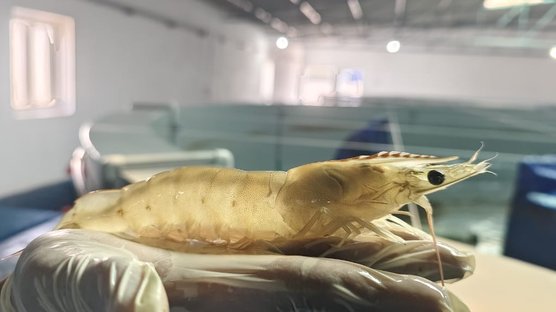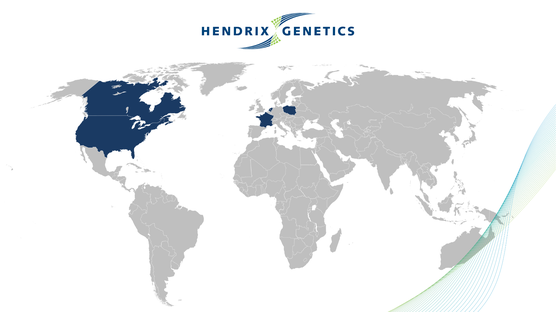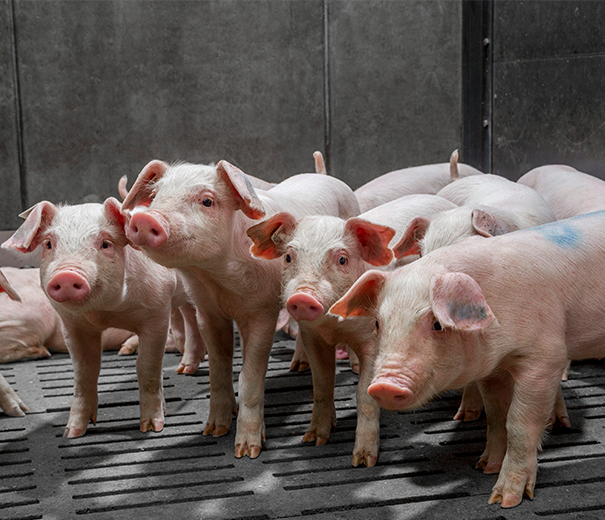
Published on July 28, 2023
Research shows the impact of balanced breeding on litter size and piglet livability
A recent scientific paper was published to highlight the long-term impact of balanced breeding on litter size and piglet livability in swine. This research shows how balanced breeding policies have been successful in increasing litter size while simultaneously increasing piglet survival rates. Read a brief summary of the results and link to the full article below.
The scientific journal, Frontiers in Animal Science, recently published a paper on “Genetic and phenotypic time trends of litter size, piglet mortality, and birth weight in pigs”. This research presents long-term time trends as realized in commercial swine breeding. Despite misconceptions from the general public and animal welfare pressure groups, this research shows clearly that balanced breeding policies have been successful in increasing litter size while simultaneously increasing piglet survival rate.
Overview
With the need for increased production efficiency in the animal protein value chain, genetics play a crucial role in achieving increased production levels in a responsible manner. The number of weaned piglets produced per sow per year is one important metric for pig breeders. When selection is only focused on litter size, the survival of piglets would go down as a result of the unfavorable relationship between litter size and piglet survival. However, with a balanced breeding approach it is possible to improve both litter size and piglet survival leading to improvement in weaned piglets per sow. The research paper evaluates data from the past two decades to demonstrate the positive effect of balanced breeding on piglet mortality and litter size.
Results – genetic and phenotypic time trends
The authors, Knap, Know, Sorensen, Huisman, van der Spek, Zak, Granados Chapatte, and Lewis, present the estimated genetic time trends of litter size, the number stillborn piglets, lactation mortality rate, and piglet birth weight. Evidence shows that “the genetic antagonisms of litter size versus farrowing and lactation piglet survival can be successfully neutralized by balanced selection policies, which have actually been realized in commercial pig breeding since 2002”.
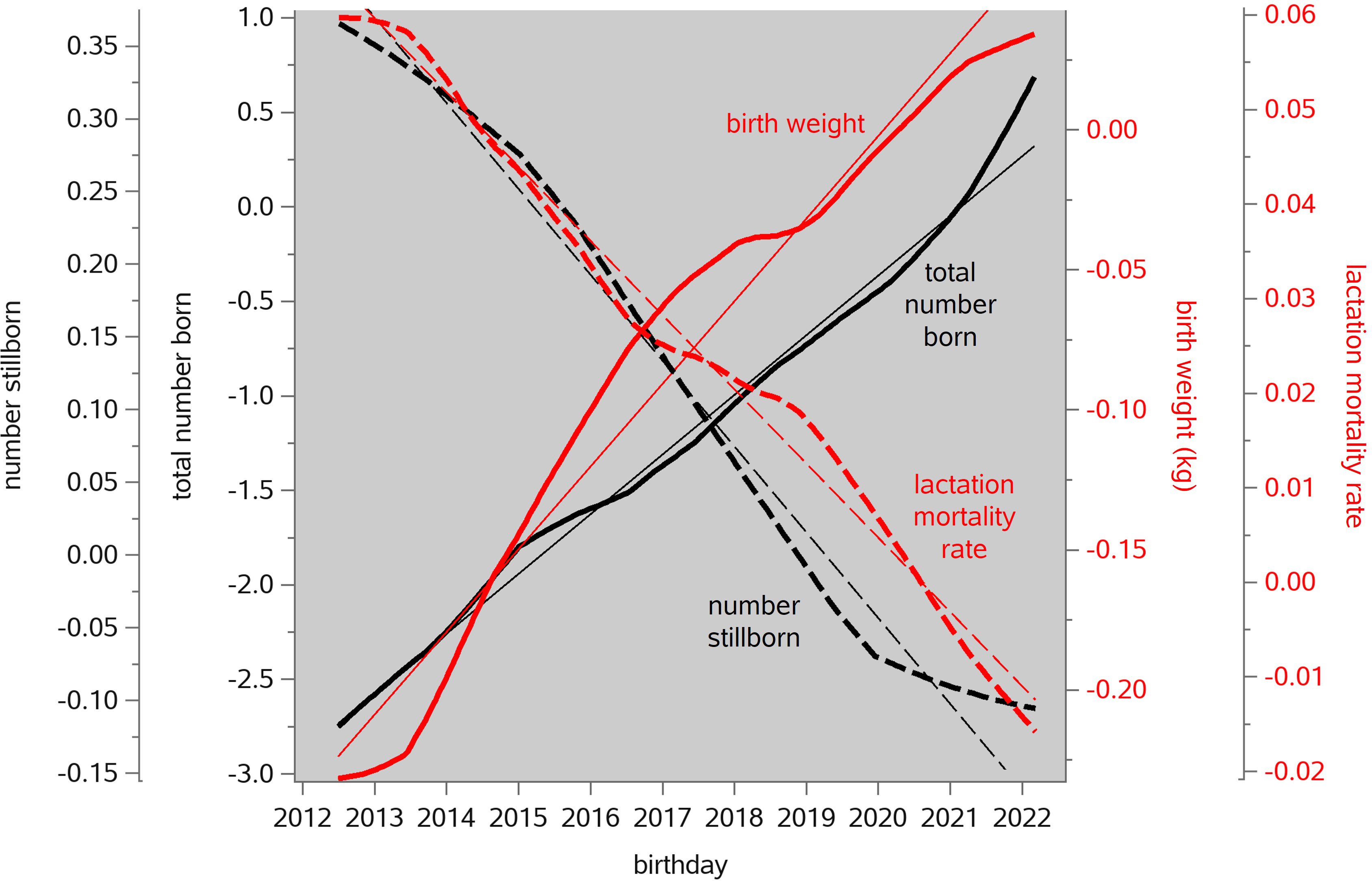
The researchers also examined whether the trends in this genetic potential are also expressed phenotypically in commercial production. Based on the average phenotypic data, the researchers determined the number of sows required to produce 1,000 weaned piglets and the number of dead piglets. Between 2000 and 2022, the number of sows needed for the production of 1,000 weaned piglets decreased from 123 to 77. In the same time, the number of dead piglets decreased from 400 to 250.
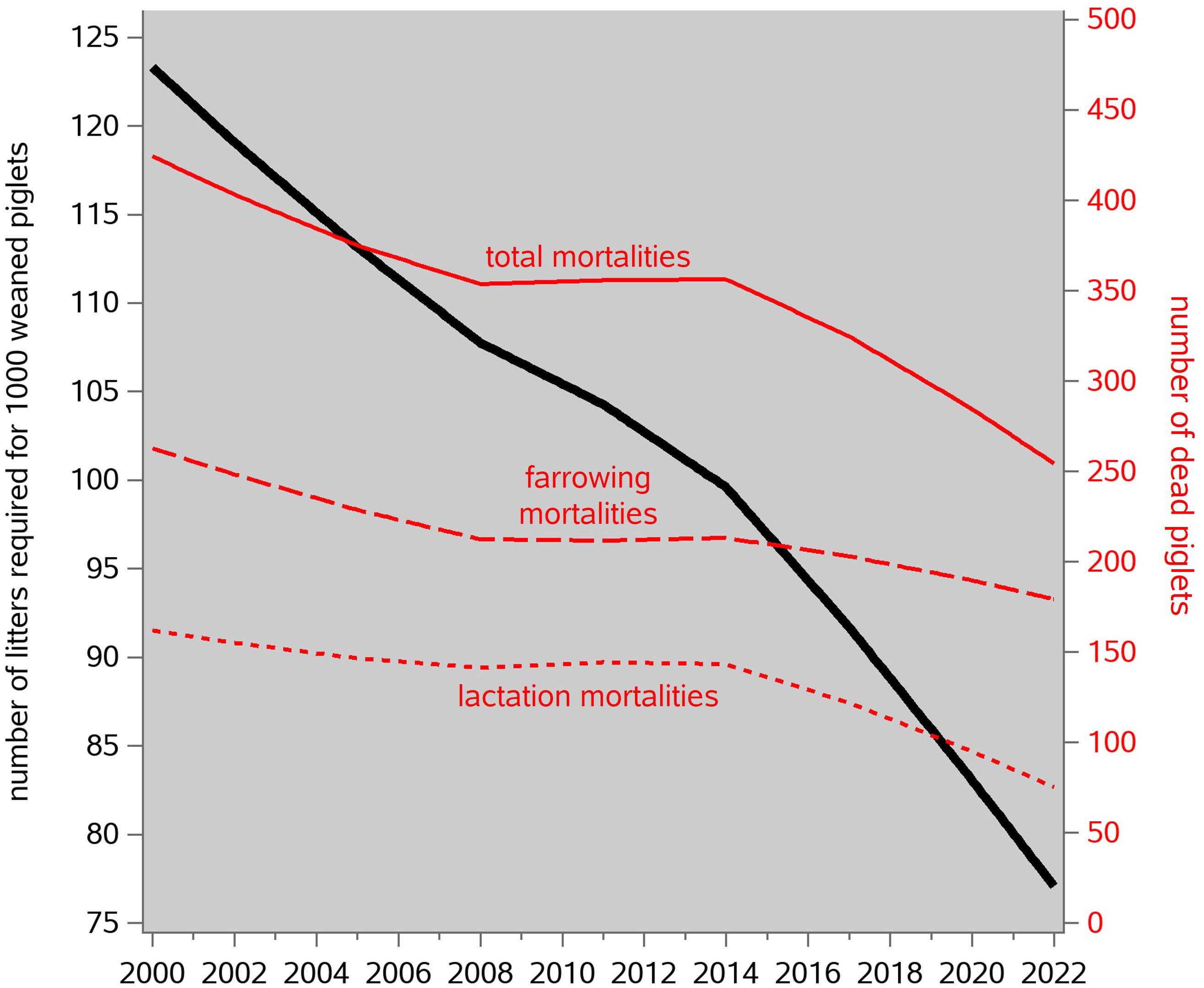
Conclusions
This research demonstrates that balanced breeding goals have led to increases in not only litter size but also piglet survival rates. Genetics plays an important role in continuing to progress further in increasing productivity while improving animal welfare and the environmental footprint of pork production.
The role of genetics
Hypor has been committed to balanced breeding since the beginning. Our focus is to set the standard for sustainable animal breeding, including the standard of sustainable litter characteristics. The standard of 16 piglets total born, 15 piglets born alive, 14 piglets weaned, means that any increase in total born must be accompanied by the same (or more) increase in born alive and weaned. If the sow cannot farrow and raise extra piglets, it is not sustainable improvement. Click here to learn more about our sustainable standards.

